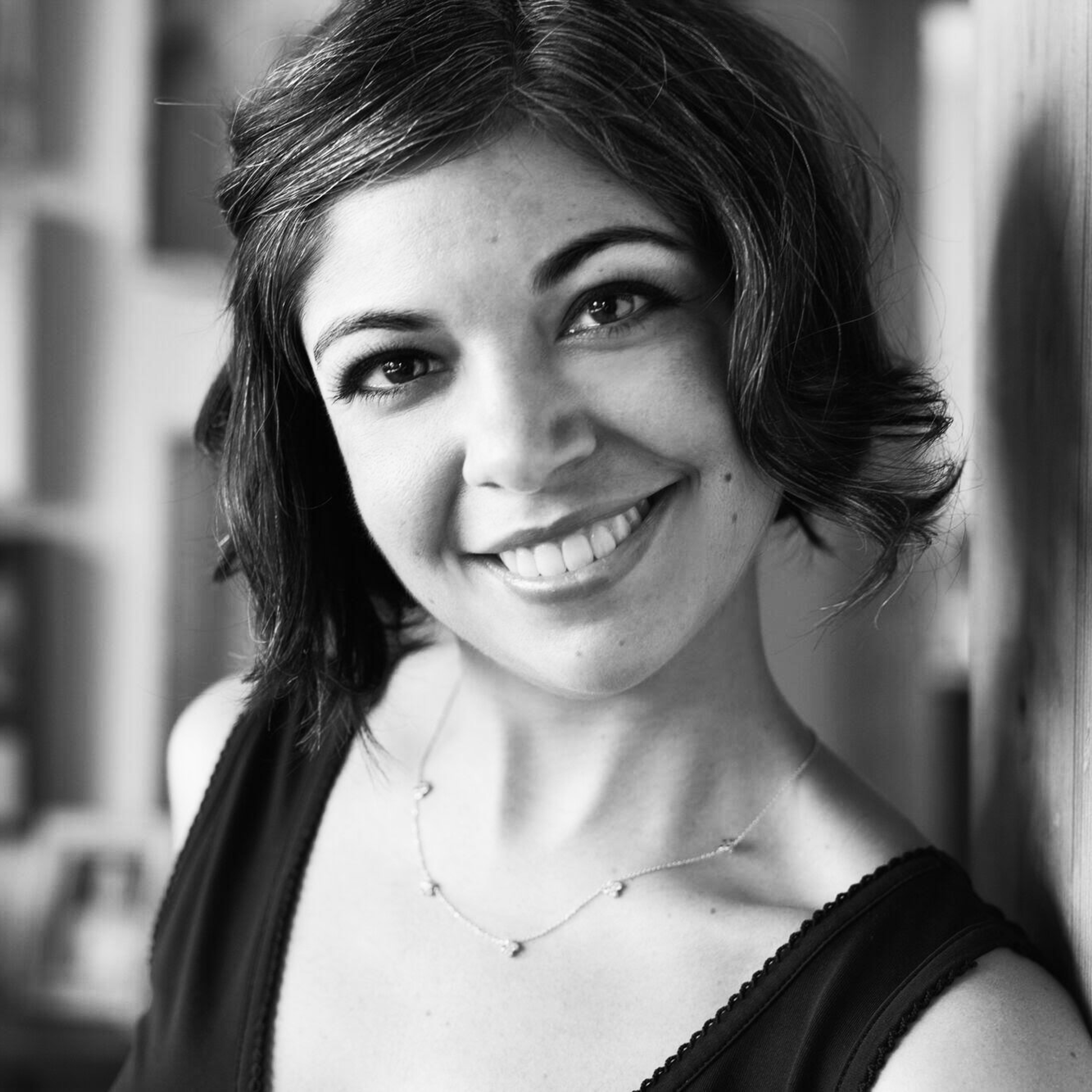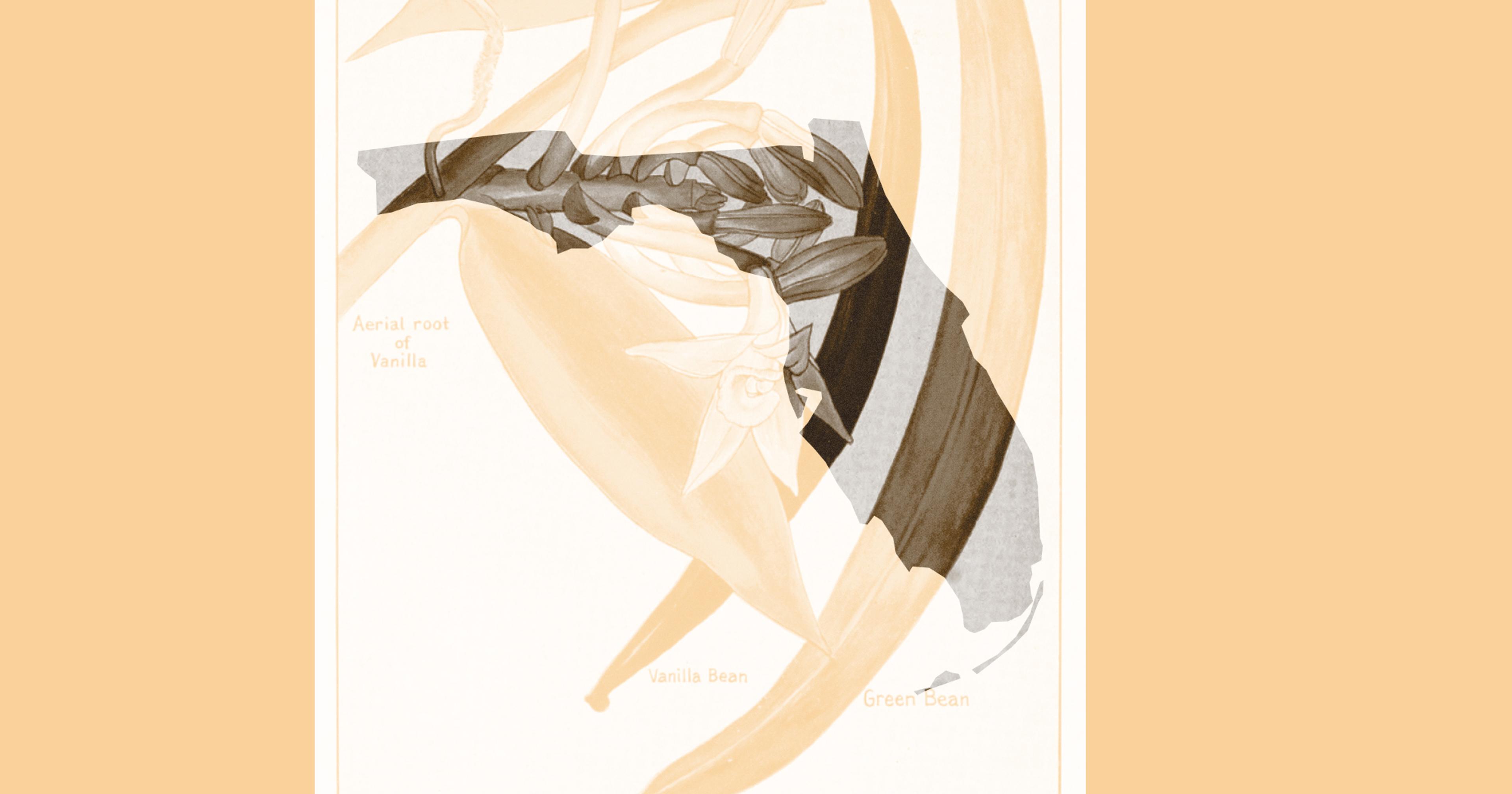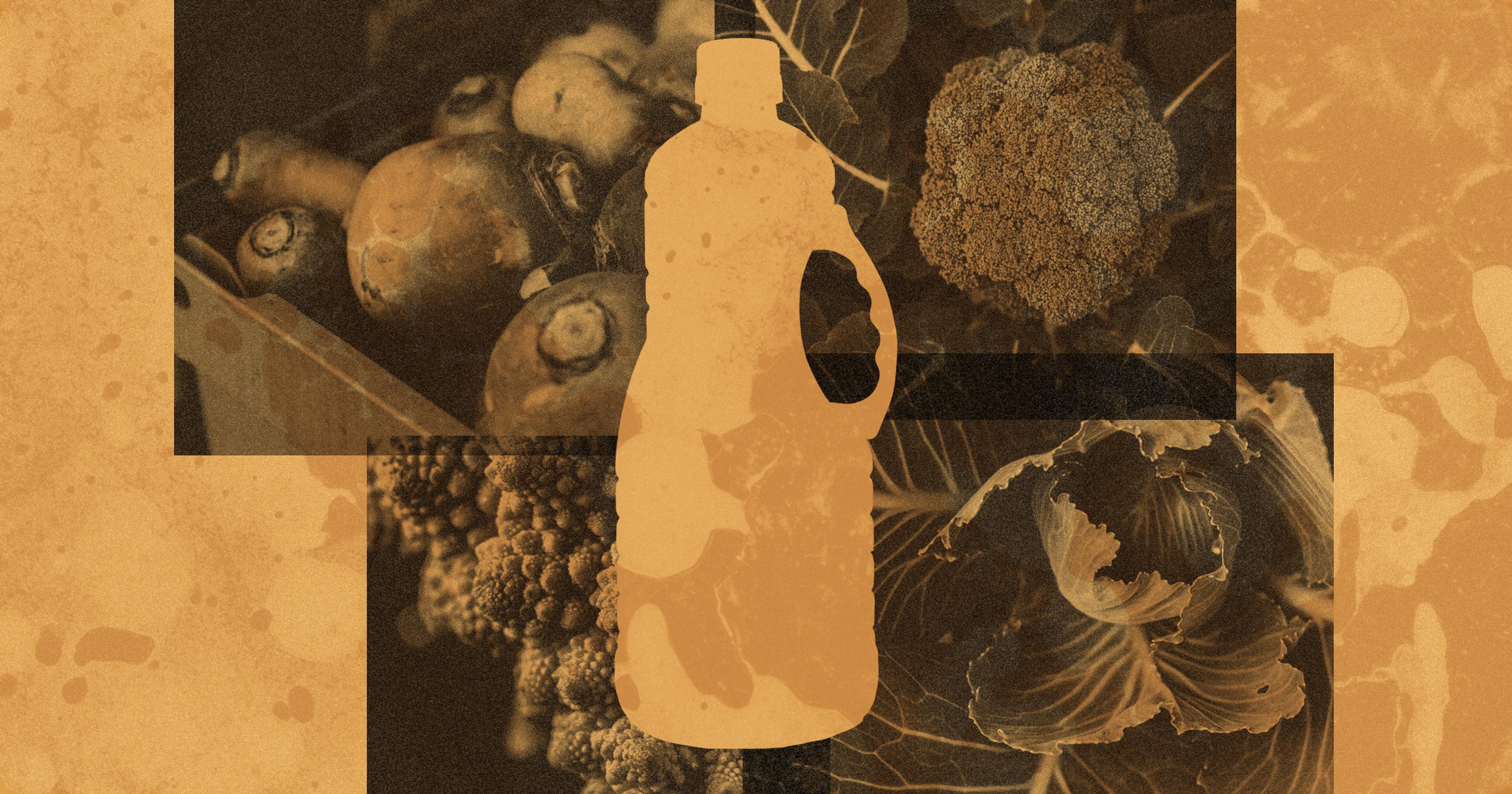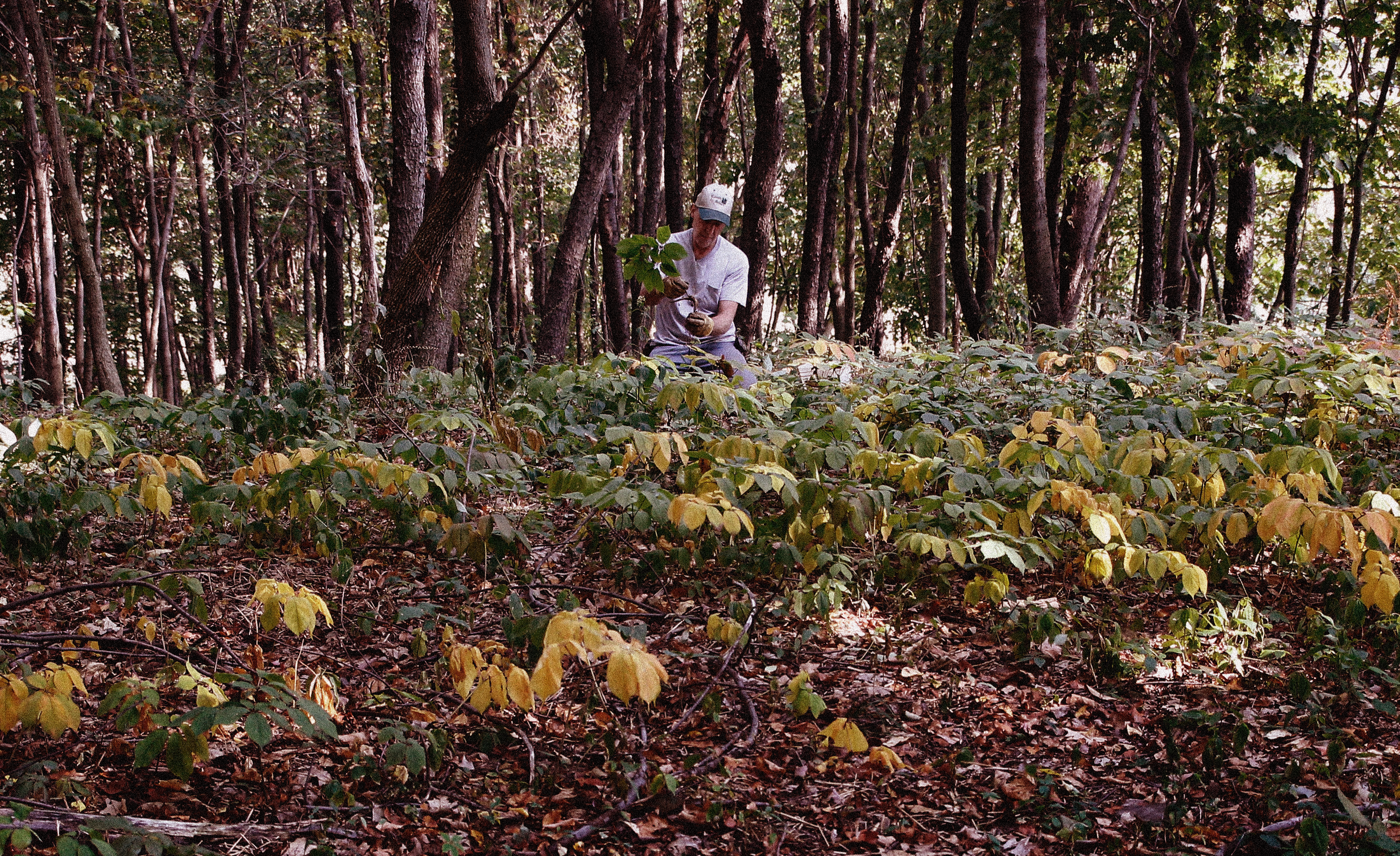Self-described witches are among the most conscientious and prolific users of botanicals, but where do they source their plants?
When Rebecca Beyer saw her Unitarian Sunday school teacher take a bowl of dough and toss it into the woods of Princeton, New Jersey, she was entranced. “I felt a deep excitement and resonance watching her,” she recalls. Her teacher explained that she was making an offering to the four directions, a practice associated with pagan and Native American traditions.
At 12 years old, it was Beyer’s first introduction to magic — and she has never looked back. Now based in western North Carolina, Beyer researches, teaches, and practices what she calls Hedgecraft: a term that encompasses Appalachian folk magic and ethnobotany, primitive skills and foraging, and traditional witchcraft.
Motivated by a desire to reclaim her ancestors’ knowledge about the natural world, Beyer also pursued a bachelor’s degree in soil science from the University of Vermont. “I love phytochemistry,” she said. “Some of my students call me the science witch because I have a degree.”
At this point, witchcraft and magic have become not just acceptable but arguably mainstream; The New York Times even declared “We have reached peak witch” in 2019. And witches who use botanicals — substances made from plant parts including roots, flowers, bark, seeds, and stems — are an increasingly visible section of our booming wellness industry. Market research estimates that the botanical sector, which includes foods and beverages, beauty and personal care products, and dietary supplements, earned an estimated $107.2 billion in 2022.
For witches like Beyer, how they source their plants matters deeply, both physiologically and spiritually. Some forage or grow their own. Others source from spiritual elders, small farmers, and ethical companies. Many use a combination. “Knowing what plants are right outside your home, and walking that line between the domesticated and the wild, to me is the work of the witch,” said Beyer.
Foraging and Farming
Beyer forages plants nearly everywhere, rejecting what she calls “the myth of purity,” or the idea that there are areas of the world untouched by pollutants. “Nowhere is pure anymore,” she said. “Everybody has been touched by the toxins of civilization.” For her, what matters more is foraging as locally as possible. She forages in the city, in the forests, on the fields around Asheville, and on nine acres of land she owns collectively with friends near Pisgah National Forest. The only areas she avoids are roadsides and housing sites due to possible lead poisoning. “People want fast and hard rules for everything, when there’s never going to be something like that — a blanket rule [for foraging] you can apply to every place,” she said.
Erika Fortner, a witch who claims European and Indigenous ancestry,* owns Queen Meb, a metaphysical shop in Portland, Oregon. Queen Meb sells nearly 200 products, including herbal tea blends, extracts, and bulk herbs and resins. She tends to trust herbs wildcrafted in nations like Mexico — where she sources her damiana, a herb used as both an aphrodisiac and to calm anxiety — more than those in the U.S.
However, there are small and large farms in the U.S. that provide high-quality, organic botanicals. Farmer Sophia Steinwachs of Mckinleyville, California, discovered herbs as a way to treat acne and anxiety in her late teens. “It had a significant impact on my overall wellbeing,” she said. She took various herbalism classes and, after working at a local herbal store for years, started Woven Hearts Herb Farm in 2019.
“She works with all the land spirits. She harvests on the full moon.”
“I love the botany side of herbalism: remembering plant families and Latin names, picking up on patterns in growth habits and smelling a plant that brings back memories,” Steinwachs said. Along with supplying herbs to small business owners — including a few witches — she sells her own teas, extracts, and salves. It’s her seasoning mixes, however, that she finds are the best way to introduce people to the medicinal benefits of plants. “There is a reason why these herbs found a place in the kitchen so long ago,” she said.
Approximately 150 miles northeast from Woven Hearts Herb Farm is Pacific Botanicals in Grants Pass, Oregon, which has been growing and sourcing botanicals since 1979. The company grows between 35 to 40 different varieties on 150 acres, according to purchasing and sales manager Nate Brennan. “I can walk out of my office, and I’m in the middle of a field,” he said.
Many of the company’s botanicals, especially the flowers, are hand-picked. When they use machines, it’s modified farm equipment: a blueberry rake for some flowers and an onion digger for roots. As Brennan said, “It speaks to the lack of equipment in the United States for medicinal herbs.” His wishlist includes specialty harvesters and post-harvesting equipment like air aspirators and machines that separate stems from leaves. “There’s a huge barrier for entry into the market on a larger scale, because there’s just not the equipment like there is in the EU,” he said. The company recently purchased a chamomile harvester from Europe, but due to supply chain issues, it took 18 months to arrive. Parts also have to come from Europe, which can add further delays.
High-quality and regenerative plants start with healthy soil, Brennan said, ensuring plenty of bacteria and fungi that encourage deep root structures. They also take cover cropping and rotation seriously: “Once we harvest that plant, we will move and keep cover crop on that field for seven years before we plant back into it, to be sure to give the soil enough time to recuperate,” he said. The company recently received a silver level regenerative organic certification from the Regenerative Organic Alliance. The quality control continues to the drying, milling, and cutting processes. “I’ve seen wonderful material that’s being grown out in the field. But then when it comes to getting dried down, it turns to brown or loses its vibrancy and its color,” said Brennan.
Sourcing and Selling
Monique, who goes by The Kitchen Bruja, practices Afro-Cuban Santeria and is a Mambo — or priestess — in Sanse. (In these spiritual communities, it is common practice to not to share full names.) Her spiritual awakening began in 2013, answering the ancestral call of her heritage: Puerto-Rican and Cuban on her father’s side and American Indian on her mother’s. “I come from a long line of traditional healers,” she said.
In 2017, the Kitchen Bruja began learning at the feet of elders, as both Santeria and Sanse are primarily oral traditions. Once certified as an herbalist, she began making the soaps, clearing sprays, oils, and other products that she sells in her spiritual apothecary, Honey Pot Herbals, and her botanica (a religious and spiritual goods shop). A friend who is also a healer thought of The Kitchen Bruja name, after noting that was where she cooked up most of her products.
In Santeria and Sanse, “we believe that when you’re treating an illness, it starts first in the spiritual realm,” said The Kitchen Bruja. “Then it manifests itself into the physical realm.” To heal, both must be treated. Often, the physical and spiritual effects of botanicals align. Take peppermint: its ability to ease digestive distress makes it a calming herb from a physical standpoint, and “from a spiritual aspect, it does the same thing. It relaxes,” she said. Peppermint is one of the herbs Monique would use in a spiritual white bath to bring tranquility to someone feeling anxious. (A spiritual bath is a blend of herbs, oils, perfumes, water, and other materials over which incantations or prayers have been spoken to heal, cleanse, or attract.)
Some of The Kitchen Bruja’s herbs — including peppermint — come straight from the garden at her Ann Arbor home, where she’s also currently growing hyssop, rue, and rosemary. Other plants, especially those used in Santeria and Sanse that flourish in southern climates, she gets from trusted sources in Miami. Her godfather grows and forages plants for her, like almácigo or mastic tree (said to be good for pursuing justice) and plants like quita maldición and rompe saraguey to ward off negative energy. She also has a trusted babalawo, or priest, who has his own nursery and performs oriki — songs of praise and enchantment — that go with each plant.
“They wake it up,” she said. “They make the plant stronger.” When the Michigan weather permits, the priest sends plants for her garden. The Kitchen Bruja even journeyed to Cuba so she could learn how to work with tobacco where her ancestors did. “Before I could get the spiritual license to work with tobacco, I had to be formally introduced to the plant,” Monique explained. “That’s the main thing right there: the respect for the plant and the love that you put into it.”
In Fortner’s case, she buys local whenever possible. For instance, she purchases Japanese mugwort from an elderly Ainu woman — a member of Northern Japan’s Indigenous people — who comes into her shop. “She cares about what’s happening to the land,” said Fortner. “She works with all the land spirits. She harvests on the full moon because that’s part of her Indigenous practice.”
“Before there was Western medicine, there was folk herbalism. I see it as the backbone to what has become Western medicine.”
She also sources a lot of her herbs from Starwest Botanicals, based out of Sacramento, California, since 1975. She said they source many of their non-local plants from Eastern European nations like Croatia and Bulgaria, which have historically used fewer pesticides and fertilizer inputs. Fortner also trusts their lot testing — something that Pacific Botanicals takes very seriously, since it sells over 250 plants sourced from other farms both nationally and internationally. They carefully vet suppliers, visually inspect at least 30 percent of every product shipment they receive, test for toxins, and regularly remove extraneous material to ensure that their margin for error is less than the 2 percent industry standard. In fact, many outside companies consult their quality control team, according to Brennan.
Fortner also has Food and Drug Administration regulations to consider. “As a physical store, I am responsible for where my herbs are sourced, what was in the soil,” she said. Each product label must list the country of origin, as well as a website or address that the FDA can contact in case of any adverse reactions. She also has a Legal for Trade scale to ensure that her measurements are accurate.
These requirements are one reason why she rarely stocks any products made by smaller online crafters. Even those with successful Etsy shops rarely include this level of information; often, Fortner said, that’s because they sell such a small amount of products that the FDA does not police them as carefully. Similarly, Fortner has to follow both federal and state laws about the amount of grain alcohol she purchases for her tinctures, or extracts of plant or animal materials in alcohol. “It goes back to the old laws of stilling,” she explained.
“As a physical store, I am responsible for where my herbs are sourced, what was in the soil.”
She also cannot claim to treat any medical conditions, though she can indicate what symptoms various herbs have been known to mitigate. “It’s important to remember that before there was Western medicine, there was folk herbalism. I see it as the backbone to what has become Western medicine,” Fortner said.
“There’s tons of scientific evidence that plants have healing compounds in them,” Beyer said. For example, she pointed to a study that found an Anglo-Saxon recipe containing garlic and leek might kill the antibiotic-resistant bacteria MRSA. However, she said the field needs more literature or systematic reviews compiling separate studies into one paper. She suspects a key reason these reviews don’t exist is that botanicals do not make as much money as pharmaceutical drugs. “Plants are incredibly cheap, free, and easy to use in conjunction with Western medicine,” she said, noting that she is vaccinated and has used pharmaceuticals to treat serious medical conditions.
Beyer believes that people often get turned off by botanicals because they use them incorrectly and then draw the wrong conclusions. “A lot of people don’t take enough herbs for long enough. They don’t dose correctly, because they don’t work with an experienced practitioner,” she said.
Or, as Fortner noted, they go in the wrong direction and take too much. Even a plant as seemingly benign as chamomile can produce adverse reactions like nausea and vomiting, or can be contraindicated with important medications like blood thinners. Given the importance of dosage, Fortner recommends people start with teas, because the botanicals are very hard to overconsume in that form.
The Herbal Pulse of the Country
After over a decade of tracking sales, Brennan has seen how the popularity of specific herbs at a given time offers a window into society’s psyche. “During Covid, everyone was really focused on immunity herbs. And then, a year afterwards, everyone was really looking for sleep, just wanting to calm down. So valerian and chamomile and passionflower were extremely popular during that time.” He is now seeing an uptick in interest in plants like rhodiola and ashwagandha, which have adaptogens, or ingredients that can regulate cortisol levels to lessen anxiety and increase clarity.
No matter what purpose they are used for, everyone interviewed suggested that sustainability will be vital to the future of botanicals. First of all, it’s what consumers want. As Fortner said, “It’s definitely going towards eco-conscious, sustainable, less big business, less monocrop.”
The climate will also demand it. “There’s a lot of pressure on herbs and plants right now. It’s important for people to realize that it’s something that could just go away,” Brennan said.
And for witches, botanicals will continue to be a means of connecting with the ways and traditions of Indigenous peoples and/or their ancestors. That’s why, for Beyer, it’s just as important to know the lore around individual plants as their medicinal benefits. “It helps us remember who taught us the use of the plants,” she said, “who to honor and who to say thank you to.”
*Note: This story originally stated that Fortner has Indigenous ancestry; we were later given information that questioned this heritage. As such, we have changed the wording to reflect this is the source’s claim, which we can not independently verify.










